
| Browntail Gum Moth (also known as Urocoma baliolalis) LYMANTRIINAE, EREBIDAE, NOCTUOIDEA | (donherbisonevans@yahoo.com) and Stella Crossley |
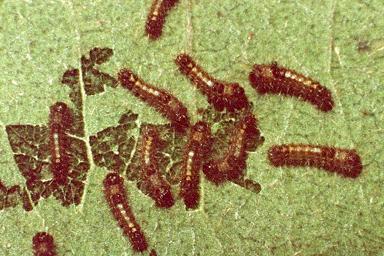

| Browntail Gum Moth (also known as Urocoma baliolalis) LYMANTRIINAE, EREBIDAE, NOCTUOIDEA | (donherbisonevans@yahoo.com) and Stella Crossley |

These Caterpillars initially are gregarious, feeding only on the surface layer of leaves of their food plant. They feed nocturnally on the foliage of
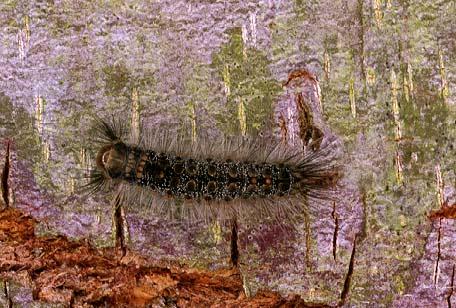
The markings on the caterpillar give it a rich tapestry-look. The thorax is red and bears long brown hairs projecting forward across its head, and more hairs form a skirt around the whole ventral surface of the body. The hairs can appear black, brown, or white, depending on the lighting and the background.
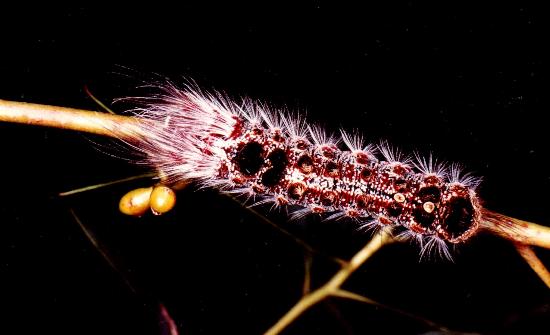
Thick short tussocks of black hair occur on its back, on abdominal segments one and two, and seven and eight. A pair of doral glands is visible on segments six and seven. Although early instars have a pair of dark hair pencils by the head, late instars have the pair of hair pencils at the tail. An intricate pattern along the back is composed of short white, red, and grey hairs.
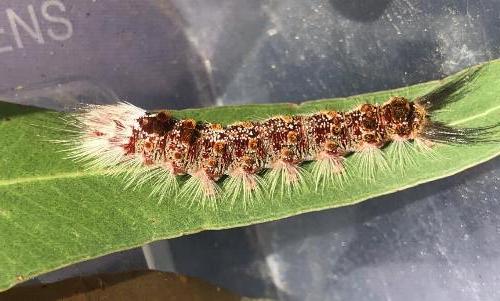
Its hairs can cause skin irritation in sensitive people ( urticaria ) if the Caterpillar is handled, particularly just prior to pupation. The caterpillar grows to a length of about 4 cms.
It wanders about for some days before pupating between Gum leaves in a woven cocoon under the bark. The hairs on the cocoon can also cause urticaria.

The adult moths are hairy and brown, with a broad white band along the terminal area of each wing, and a dark brown body.
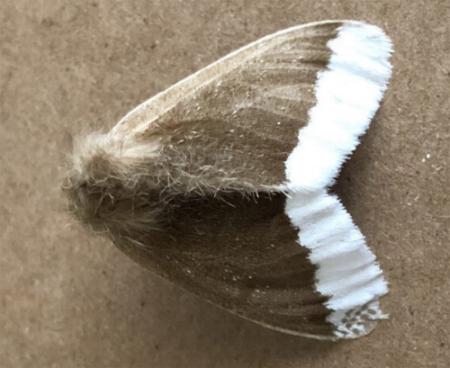
The moths have a wingspan up to 5 cms.
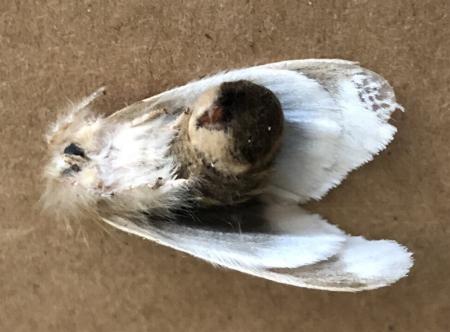
The females lay their eggs in a pile of about 20, and cover them with brown hairs.
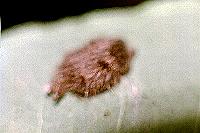
The species is found over most of the south-east quarter of Australia, including:
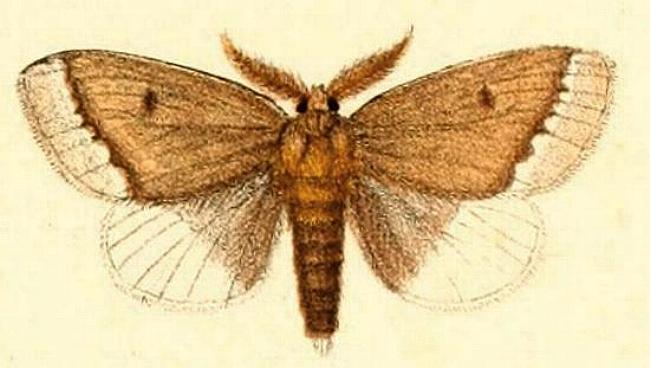
Further reading :
Ian F.B. Common,
Moths of Australia,
Melbourne University Press, 1990, fig. 43.10, p. 429.
Pat and Mike Coupar,
Flying Colours,
New South Wales University Press, Sydney 1992, p. 64.
Peter Marriott ,
Moths of Victoria - Part 2,
Tiger Moths and Allies - NOCTUOIDEA (A),
Entomological Society of Victoria, 2009, pp. 16-19.
Charles Swinhoe,
Sphinges and Bombyces,
Catalogue of eastern and Australian Lepidoptera Heterocera
in the collection of the Oxford University Museum,
Clarendon Press, Part 1 (1892), p. 215, and also
Plate 6, Fig. 7.
 caterpillar |  butterflies |  Lepidoptera |  moths |  caterpillar |
(updated 22 April 2011, 11 February 2014, 18 February 2019, 12 March 2021)